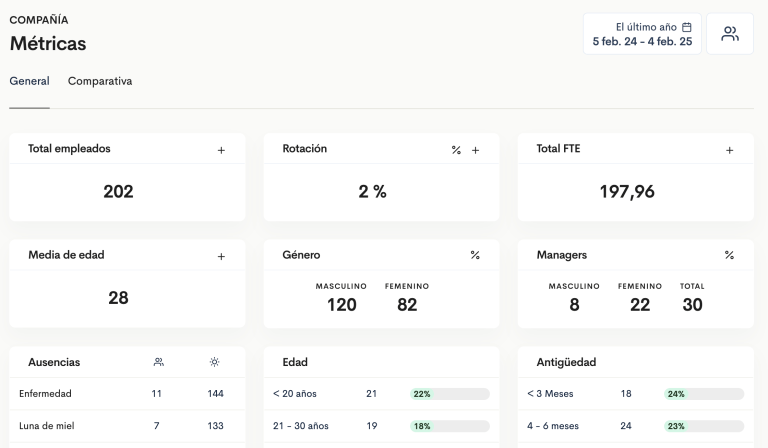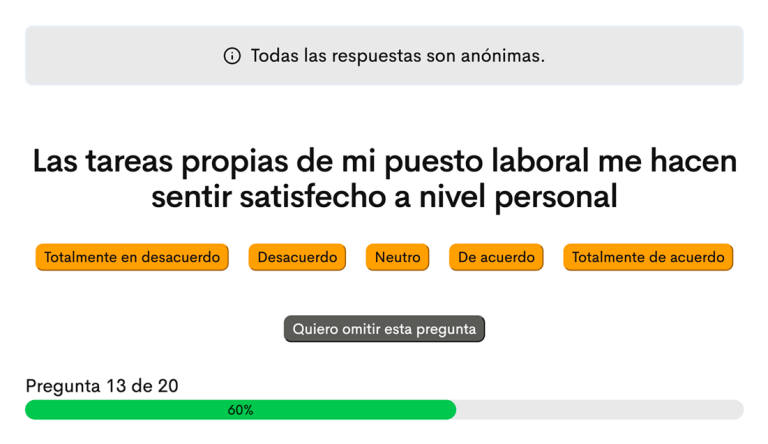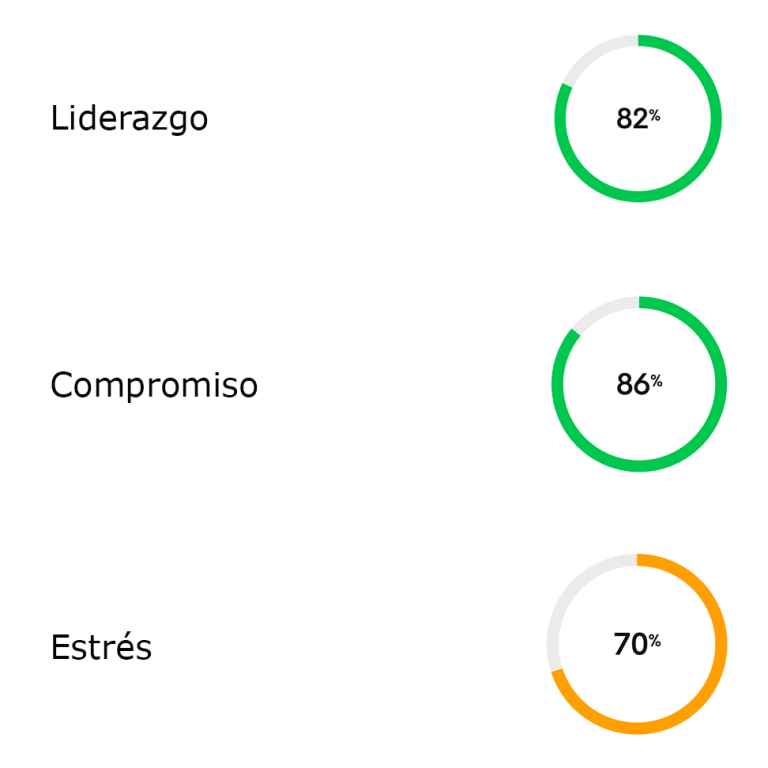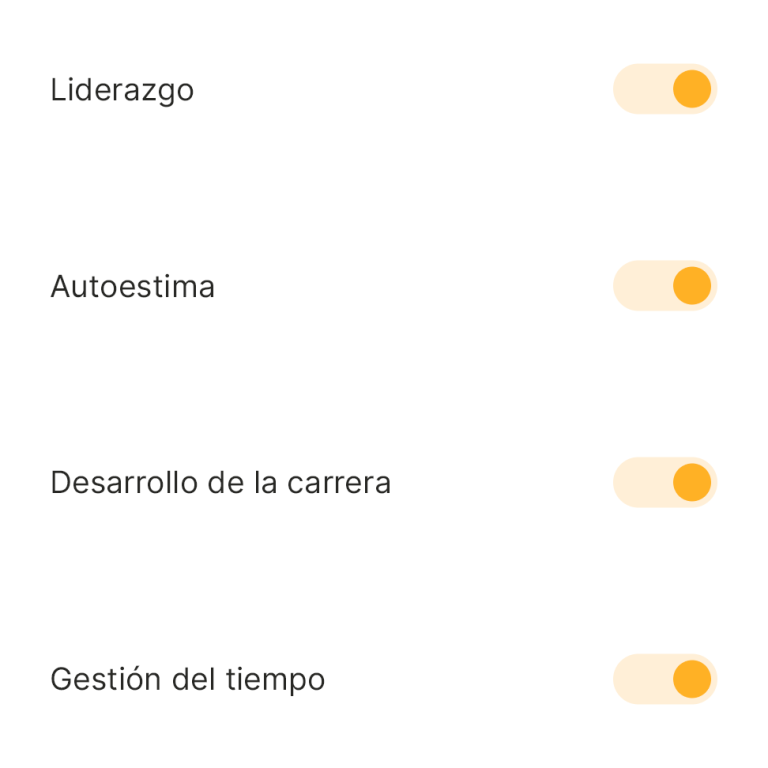





Technology
If only we had arrived in time…
You find the ideal candidate, invest months in their onboarding, and before two years are up, they leave. It’s not an isolated case. In technology, turnover is constant, and it always seems like you’re late to the problem. By the time someone resigns, the cause was already there months ago, yet no clear signs.
Remote work and distributed teams make this worse. Disconnection from company culture, lack of close leadership, and difficulty detecting demotivation in time cause talent to vanish without warning.
You try reacting with isolated actions, but you still feel you’re only responding when the problem is already unavoidable.
How do you keep top talent from leaving before it’s too late?
Main Pain Points
Turnover
- Higher than in other sectors, ranging between 20% and 30%.
- Replacing someone can cost between 50% and 250% of their salary.
- The main cause isn’t salary: 72% cite lack of development opportunities, and 50% link it to leadership.

Managers, not leaders
- 70% of engagement depends on the manager
- Over 80% of tech managers were promoted for their tech, not soft, skills
- Nearly 60% of tech employees have considered leaving their company due to poor management

Team disconnection
- 67% of remote employees feel “disconnected”
- They have 35% fewer internal growth opportunities
- 70% of employees in companies with distributed teams say communication with their managers is deficient



Pharma
When turnover puts critical knowledge at risk
Training a pharma professional isn’t just a matter of onboarding. Processes are complex, regulations demand precision, and each employee builds up key expertise that can’t be lost. Then one day, they resign. Along with them goes the experience you spent years cultivating.
Turnover in this sector doesn’t just cost money; it affects the continuity of critical projects. The pressure and high level of demand cause burnout, and by the time you notice, it’s already too late.
The issue isn’t just attracting talent, but retaining it before burnout and disengagement lead to departure.
How do you prevent key knowledge and experience from walking out the door before you can respond?
Main Pain Points
Turnover
- Turnover in pharma can exceed 25%, a critical issue in a sector where specialization is key.
- Replacing a highly qualified profile can cost 100% to 300% of the annual salary, considering training and adaptation time.
- The main reason for leaving isn’t salary: 68% mention lack of professional development as the primary reason, and 55% attribute it to ineffective leadership.

Managers, not leaders
- 80% of pharma managers were promoted for technical expertise, with no leadership training
- 60% of pharmaceutical teams report a lack of feedback and clear communication, impacting retention
- Poor leadership is one of the main reasons for demotivation and talent attrition in the sector, affecting productivity

Overload and burnout
- 60% of pharma employees say they feel overloaded, increasing the risk of burnout and low motivation.
- Burnout is more common in pharma than other sectors, with around 25% of employees affected, while the general prevalence of burnout is about 7%.
- These figures can be even higher in areas like commercial teams, given their business model and goal-driven work.



Tourism
How do you manage a unified company culture when each team has a different reality?
A hotel in Madrid, another in Barcelona, staff in reception, kitchen, housekeeping, administration… No two teams operate the same, yet they’re all part of the same company. And that’s the challenge: how do you unite a culture in a sector where work experiences differ so greatly?
High turnover is a constant issue. Disconnection between corporate offices and day-to-day operations causes a lack of cohesion and makes communication difficult. Meanwhile, stress keeps building in the most critical teams.
You try to respond, but the problem is always one step ahead. How do you stop talent from leaving before you can act?
Main Pain Points
Constant turnover, absenteeism
- Turnover in hospitality exceeds 70% per year, more than double that of other industries.
- Replacing an employee can cost up to 50% of their salary, including training, adaptation, and lost productivity.
- 60% of workers who leave cite a lack of growth opportunities as their main reason.

Fragmented, disconnected culture
- 65% of hospitality employees say that internal communication is poor, affecting team cohesion.
- In multi-location companies, operations staff have 40% less interaction with management, creating gaps in cultural alignment.
- Lack of visibility into teams’ emotional state makes it hard for HR to make strategic decisions.

Operational, not human-focused leadership
- 70% of mid-level hospitality managers were promoted from operations without leadership training.
- Over 50% of employees cite work-related stress resulting from lack of feedback and effective team management.
- Leadership based solely on task management contributes to demotivation and talent loss.



Retail
When each store is its own world, but they all face the same challenges
Each retail location has its own dynamic: some are downtown, some in shopping malls, others in smaller towns. Different realities, but the same problems: constant turnover, demotivated teams, and managers with no leadership training.
Stores operate under high pressure with demanding targets. While you try to figure out what’s going on at each location, talent leaves without warning. The result? Lack of continuity, low productivity, and a constant feeling of always reacting instead of preventing.
How can you anticipate turnover, improve in-store leadership, and align culture across all locations?
Main Pain Points
Constant attrition that hinders stability
- Turnover in retail reaches 60% per year, one of the highest in the job market.
- The cost of replacing an employee can be 50-60% of their salary, considering training, lost knowledge, and lower productivity.
- 55% of retail employees mention lack of growth opportunities as the main reason for leaving.

No connection between stores and corporate
- 62% of store employees feel that corporate doesn’t understand their daily reality, reducing motivation and commitment.
- 45% of retail teams say communication between stores and headquarters is insufficient, causing a sense of isolation.
- Store employees have 35% less access to internal development opportunities, affecting retention.

Managers without training, teams without motivation
- 75% of managers in retail were promoted internally without leadership training, affecting team management.
- 50% of retail employees report lack of feedback and communication with their manager, directly impacting morale and productivity.
- Poor leadership fosters a tense work environment and increases absenteeism and turnover.



Consulting
When excellence comes at a cost
Demanding projects, exacting clients, tight deadlines. The pace in consulting and services never slows. You work with highly skilled teams who know their talent is valuable and scarce, but also that exhaustion is part of the daily routine.
Endless days and pressure to deliver results lead to fatigue. People hold on until one day they leave. By the time you notice, it’s too late. Turnover disrupts project continuity, knowledge is lost, and workload multiplies for those who stay.
Consulting thrives on expertise and human capital, but how do you keep top talent from being driven away by the relentless pace?
Main Pain Points
Burned-out talent, talent out the door
- 65% of consultants feel their workload is unsustainable at times, increasing the risk of burnout.
- Consulting turnover can reach 30-40% per year, among the highest in highly skilled sectors.
- 60% of employees who leave a consulting firm do so due to lack of work-life balance.

Project management and leadership without a human touch
- 70% of employees in professional services feel they’re measured only by billable hours, not by well-being or development.
- 55% of managers in consulting were promoted for technical expertise, with no team management training.
- Lack of effective leadership fosters a high-demand, low-support environment, increasing absenteeism and disengagement.

Demanding clients, overloaded teams
- 68% of consultants say client pressure is the main source of work-related stress.
- Over 50% of employees in professional services regularly work outside normal hours, affecting motivation and mental health.
- Lack of tools for workload management and internal communication makes teams feel alone under external pressure.










